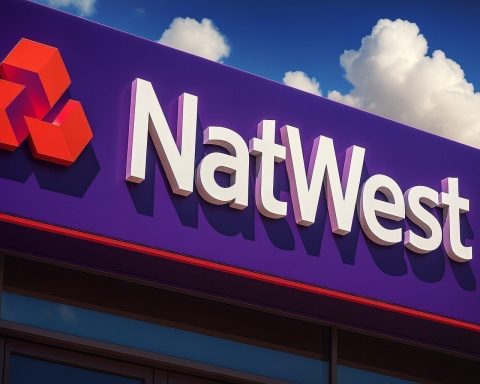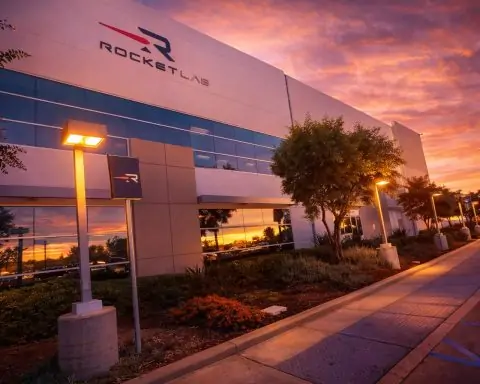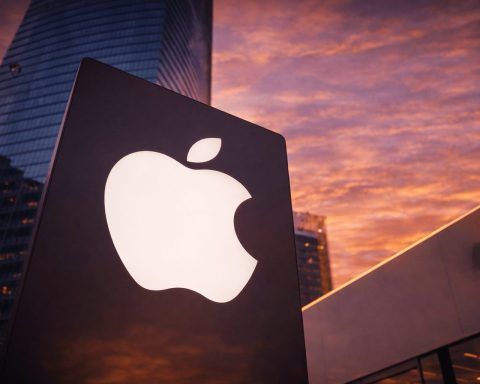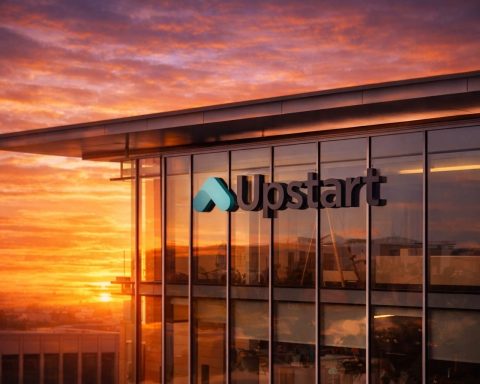Key Facts
- Apple’s Bold Hardware Refresh: Apple unveiled the iPhone 17 lineup – including an ultra-thin iPhone Air – alongside new Apple Watch Series 11 and AirPods Pro 3 at its Cupertino event [1]. Analysts praised the iPhone Air’s sleek 5.6 mm design and advanced A19 chip, predicting it will spur upgrade cycles [2]. However, the launch was light on AI features, leaving some experts noting Apple remains behind rivals in smartphone AI capabilities [3]. (Nabila Popal of IDC noted: “Apple’s late, but when they do it, they do it bigger or louder or better than anyone.” [4])
- Major Tech IPOs & Valuations: In a fintech milestone, Sweden’s buy-now-pay-later pioneer Klarna debuted on the NYSE at a $19.7 billion valuation after a 30% stock jump [5], headlining the biggest U.S. IPO week in years. Biotech firm LB Pharmaceuticals also raised $285 million in its Nasdaq IPO – the first sizable biotech listing since February [6] – as investors cautiously return to the sector. Meanwhile, Oracle stock soared ~37% to record highs after landing four massive cloud contracts (including a $300 billion deal with OpenAI) [7] [8], briefly propelling founder Larry Ellison’s net worth to ~$392 billion and closing the gap with Elon Musk [9].
- Global Tech Policy Shake-Ups: EU regulators were dealt a setback when a court sided with Meta and TikTok in overturning a flawed “Digital Services Act” fee formula, forcing Brussels to revise how it charges Big Tech for compliance monitoring [10] [11]. In the U.S., lawmakers targeted outsourcing and security practices – a proposed 25% tax on American firms offshoring IT work has India’s huge tech sector on edge [12], and Senator Ron Wyden urged the FTC to investigate Microsoft for “gross cybersecurity negligence” after a string of breaches, likening the company to “an arsonist selling firefighting services to their victims” due to its dominant, vulnerable software [13] [14].
- Cybersecurity Threats and Crackdowns: The U.S. Treasury sanctioned Southeast Asian cybercrime cartels that stole “tens of billions” via online scams [15], citing operations in Myanmar and Cambodia that used trafficked workers to defraud Americans. “Southeast Asia’s cyber scam industry…subjects thousands of people to modern slavery,” a Treasury official warned [16]. On the defense front, the Pentagon rolled out strict new cybersecurity rules for contractors [17], and Adobe issued an emergency patch for a critical Magento e-commerce flaw (dubbed “SessionReaper”) that could enable total site takeover [18] [19]. Apple users were also cautioned, as hackers found a way to hijack iCloud Calendar invites to spread malware [20].
- Space & Telecom Breakthroughs:SpaceX successfully launched 21 satellites on Sept. 10, kicking off the U.S. Space Development Agency’s new “Tranche 1” low-Earth orbit constellation for global encrypted military communications [21] [22]. The network will eventually include 126 small satellites to link military assets worldwide. In the telecom arena, SpaceX also acquired $17 billion worth of wireless spectrum from EchoStar to boost its Starlink direct-to-cell satellite broadband service [23]. The deal expands Starlink’s reach to standard smartphones and effectively bails out debt-ridden EchoStar [24] [25]. (Competition in space-based internet is heating up; Amazon’s rival Project Kuiper also saw progress, with an Atlas V launch of new satellites slated this month.)
- Biotech & Health Tech Moves: Pharmaceutical giant Novartis announced a $1.4 billion acquisition of U.S.-based Tourmaline Bio, gaining a Phase-3 ready cardiovascular drug aimed at lowering inflammation in atherosclerosis [26] [27]. The deal bolsters Novartis’ heart drug pipeline with the targeted therapy pacibekitug. The biotech sector also notched a win on Wall Street: as noted, LB Pharmaceuticals’ IPO (funding schizophrenia drug trials) signals tentative reopening of biotech funding after a dry spell [28] [29]. Analysts caution that investors remain wary of the long timelines and high costs in biotech R&D despite these positive signs.
Hardware & Consumer Electronics
Apple commanded headlines with a raft of new gadgets revealed at its September 10 event. The star of the show was the iPhone Air, Apple’s slimmest smartphone ever at just 5.6 mm thick [30]. CEO Tim Cook invoked Steve Jobs’ legacy, emphasizing Apple’s design ethos of form and function [31]. Inside the razor-thin aluminum frame, the iPhone Air packs Apple’s new A19 Pro chip and promises “all-day” battery life despite its size [32]. The Air – alongside the standard iPhone 17, 17 Pro, and 17 Pro Max – introduces the biggest iPhone design refresh in eight years [33]. Notably, the Air trims features to hit a lower price, sporting a single rear camera and eSIM-only design, but analysts predict it will attract upgraders seeking a distinctive form-factor [34]. “We were more impressed with the look and capabilities of the Air than we expected… this could improve iPhone upgrade rates,” wrote Morgan Stanley’s team after the launch [35].
Despite the fanfare, Apple’s event left some watchers underwhelmed on the software front. Unlike Google’s latest Pixel phones which tout new generative AI smarts, Apple’s presentation largely skipped AI features [36]. The A19 chip is technically tuned for on-device machine learning, but Apple offered few demonstrations of AI-driven experiences. This contrast wasn’t lost on industry experts – Apple has been seen as a laggard in mobile AI, and the Wall Street Journal noted lingering doubts about its strategy [37]. Still, longtime Apple observers were enthused by the bold hardware. “The iPhone Air … reinvigorates the whole segment,” said analyst Paolo Pescatore, citing its ultra-thin build as the kind of engineering feat Apple fans have craved [38] [39]. Alongside phones, Apple also rolled out incremental updates to its wearables: a Watch Series 11 with improved health sensors, and AirPods Pro 3 earbuds boasting better noise cancellation and battery life (available Sept. 19). These product launches collectively aim to energize Apple’s ecosystem ahead of the critical holiday quarter.
Beyond Apple, a flurry of other consumer tech launches marked the week. Legacy audio brand Bose introduced the QuietComfort Ultra Headphones II, its new flagship noise-cancelling cans that upgrade the ANC strength, add lossless USB-C audio, and significantly boost battery life [40]. In digital imaging, Fujifilm surprised filmmakers by unveiling its first-ever cinema camera – a medium-format cinema model capable of shooting 8K video and rich film-style color simulations [41]. This high-end camera (larger sensor than full-frame) positions Fujifilm to compete in professional cinematography equipment, an area traditionally dominated by Arri and RED. Laptop enthusiasts, meanwhile, saw Dynabook (formerly Toshiba) launch an ultraportable notebook series weighing a mere 849 g each – roughly “two cans of Coke” – underscoring the ongoing race to feather-light PCs [42]. And for drone aficionados, leaked images of the upcoming DJI Mini 5 Pro suggested a welcome price drop and sooner-than-expected release, whetting appetites in the UAV community [43]. From phones and wearables to cameras, headphones and beyond, these two days brought a wave of innovative gadgets catering to both mainstream consumers and niche prosumers.
Software & Platforms
Several notable software updates and platform moves emerged across the tech landscape. In an unexpected bit of tech nostalgia, Microsoft open-sourced nearly 7,000 lines of its earliest code – the 1970s BASIC interpreter co-written by Bill Gates that helped ignite the personal computing revolution [44]. Microsoft posted the assembly source for the 6502 BASIC on GitHub as a historical artifact, inviting developers to tinker with the code that ran on millions of Commodore, Apple II, and other early PCs [45]. This gesture toward the open-source community was framed as a milestone in the company’s history, and enthusiasts welcomed the chance to peek under the hood of Gates’ foundational software. (Commodore had famously licensed Microsoft’s BASIC for just $25,000 in 1977 [46], a decision that proved instrumental in popularizing home computing.)
In more current news, Apple’s software ecosystem got an update as the company announced macOS “Tahoe” 26 will release next week [47]. Notably, this version introduces a new DIY repair mode allowing advanced users to run diagnostics and install replacement parts for Macs more easily – a move lauded by right-to-repair advocates. Apple claims this can save customers money on fixes [48], aligning with broader industry trends toward user-serviceable tech. On the mobile side, Signal, the secure messaging app, rolled out a long-requested feature: 100 MB of free cloud storage for encrypted message backups [49]. This opt-in backup lets Signal users store their chat history (in a locked format) off-device, protecting against phone loss while ostensibly preserving privacy. Given Signal’s staunch anti-surveillance stance, the cloud backup is carefully implemented with user-held keys to prevent any server-side access to the messages.
Among developer communities, GitHub and the Linux Foundation made waves calling for more open-source funding in Europe, and Mozilla released an overhauled version of its Rust programming language package manager. And on the gaming front, Nintendo confirmed a major Direct showcase, sparking speculation about new Switch 2 details – though that event is slated just beyond our window, it highlights the fervor in the software/gaming realm. Overall, while hardware headlines dominated these days, software improvements – from retro code releases to modern OS upgrades – quietly continued to enhance the user and developer experience.
Cybersecurity & Data Privacy
It was a dramatic 48 hours in cybersecurity, with governments and hackers both making bold moves. The United States Treasury Department announced sanctions against sprawling cyber-scam networks operating in Southeast Asia, after a report found Americans lost at least $10 billion to these scams in 2024 [50]. U.S. officials targeted 19 entities across Myanmar and Cambodia tied to massive fraud rings that lured workers into compounds and forced them to run online scams [51] [52]. These syndicates, which often combine illegal gambling, crypto fraud and investment scams, are not only fleecing victims worldwide but also enslaving the people executing the scams. “[This] industry not only threatens the financial security of Americans, but also subjects thousands of people to modern slavery,” said John Hurley, Treasury’s cyber intelligence chief [53]. The sanctions freeze U.S.-linked assets of the groups and aim to cut off their funding. While unlikely to eliminate the problem overnight, it’s a significant escalation in the global fight against organized cybercrime – and shines a light on the human trafficking underpinning some online scam operations.
On the cyber-defense side, the Pentagon implemented new cybersecurity rules for defense contractors [54]. Any vendors bidding for U.S. Department of Defense contracts must now meet stricter cyber standards and reporting requirements, part of an effort to harden the military supply chain against hacks and espionage. The rules require continuous monitoring and impose liability for lapses, reflecting lessons learned from past breaches (like the infamous SolarWinds incident) that exposed defense data via private suppliers. Similarly, U.S. Senator Ron Wyden ratcheted up pressure on Big Tech over security: in a fiery letter, he urged the FTC to hold Microsoft accountable for its role in recent hacks [55]. Wyden argued that Microsoft’s widespread software (Windows and Azure) has default settings and vulnerabilities that made multiple breaches – including ransomware attacks on hospitals – far more damaging [56]. “Microsoft has become like an arsonist selling firefighting services to their victims,” the senator wrote, accusing the firm of profiting from cloud security remedies to problems it helped create [57]. He noted that due to Microsoft’s near-monopoly in enterprise software, customers “have no choice” but to use its products despite the risks [58]. The strongly-worded call for investigation underscores growing scrutiny of whether software giants should bear more responsibility (and possibly liability) for security failures.
Meanwhile, cybercriminals continued to exploit new angles. Researchers warned of a novel Android trojan using NFC tap-to-pay to stealthily steal money from mobile devices in close proximity [59]. And a quirky but concerning attack targeted Apple’s iCloud Calendar: security firms revealed hackers are sending booby-trapped calendar event invites that, if clicked in Apple’s Calendar app, can infect Macs with malware [60]. Because Calendar invites may sneak past email filters, users were urged to treat unexpected calendar invites warily or adjust settings to block automatic invite additions. In another Apple-related risk, quarantine evasion was reported on macOS where rogue calendar files could bypass Gatekeeper protections – a reminder that even lesser-used vectors (like .ics calendar files) can be abused.
On a more positive note, Adobe moved quickly to patch what it called the “most severe” security flaw ever found in its Magento eCommerce platform [61]. The critical bug, dubbed CVE-2025-54236 “SessionReaper”, earned a CVSS 9.1/10 rating and could allow an attacker to hijack user sessions and gain administrator access to online stores [62]. Adobe released an emergency hotfix on Sept. 9 and urged Magento and Commerce site owners to apply it immediately [63]. Although there were no confirmed exploits in the wild yet, the patch itself was leaked prior to release, raising fears that bad actors might reverse-engineer it to develop attacks [64]. Site operators who delay patching now face the dual risk of known vulnerable code and threat actors actively probing for unpatched servers. This incident follows a string of high-profile software zero-days this year (including critical flaws in Cisco, Citrix, and SAP systems [65] [66]), putting IT teams on high alert. The clear takeaway: prompt patching and robust incident response remain as crucial as ever in the escalating cat-and-mouse game of cybersecurity.
Tech Industry & Regulation
Major tech companies and regulators saw consequential developments during this period, reflecting the ongoing tug-of-war between innovation, market forces, and government oversight. In Europe, Big Tech scored a notable legal victory: the EU’s General Court ruled in favor of Meta (Facebook) and TikTok, who had challenged the European Commission’s method of calculating new DSA (Digital Services Act) fees. Under the DSA, large online platforms must pay a supervisory fee (0.05% of worldwide revenue) to fund EU oversight [67]. Meta and TikTok argued the Commission set this fee using a flawed methodology without proper legal basis [68]. Judges agreed, voiding the current fee scheme and giving regulators 12 months to rework it [69]. Importantly, the court did not order immediate refunds of fees already paid [70], but the decision forces Brussels to go back to the drawing board for a more defensible approach. This is a rare setback for EU tech regulation – officials in Brussels have aggressively pushed new rules on content moderation, competition, and data, but here the process overstepped. The ruling may slightly delay implementation of the DSA and DMA (Digital Markets Act) as regulators ensure their enforcement mechanisms can withstand legal challenge.
Across the Atlantic, India’s massive IT services industry is facing a potential shock from U.S. policy. A bipartisan proposal in Washington to impose a 25% tax on American companies that outsource jobs abroad has caused alarm in Bangalore and beyond [71]. Indian tech giants like TCS, Infosys, and Wipro depend heavily on U.S. clients for outsourcing contracts. The prospect of a steep tax on offshoring – ostensibly to incentivize hiring U.S. workers – has already led some U.S. customers to delay or renegotiate deals with Indian vendors [72] [73]. Analysts say the bill in its current form is unlikely to pass, but it signals a tougher stance that could “initiate a gradual shift” in how companies approach global IT services [74]. Indian firms are lobbying hard against the measure, arguing it would raise costs and hurt competitiveness. Should any version of the outsourcing tax advance, it could prompt Indian providers to invest more in U.S. hiring or near-shoring – or push American multinationals to automate tasks instead of outsourcing. For now it’s uncertainty, but the mere threat underscores the growing political scrutiny of tech globalization and its domestic labor impacts.
In corporate news, Oracle Corporation made financial waves as its stock rocketed upward on September 10. Oracle announced a blowout quarter fueled by surging demand for cloud infrastructure to train AI models – capped by the revelation of four giant cloud contracts worth billions each [75]. This includes a landmark deal with startup OpenAI, which reportedly committed to spend a staggering $300 billion on Oracle’s cloud over the next five years [76]. Oracle’s CEO Safra Catz touted that the company is becoming a top destination for AI workloads (challenging AWS, Azure, and Google). Investors responded by piling into Oracle shares, which jumped over 35% in one day [77]. The stock hit all-time highs, briefly elevating Oracle near a $1 trillion market cap, and swelling co-founder Larry Ellison’s fortune by roughly $100 billion in paper gains [78]. Forbes estimated Ellison’s net worth around $392 billion after the surge, putting him within a stone’s throw of Elon Musk ($440 billion) as the world’s richest person [79]. While Oracle’s rally was directly tied to AI cloud optimism (ironically a non-AI story by our criteria, focusing on business outcomes), it underscores how traditional tech firms are leveraging the AI arms race to rejuvenate their fortunes. Oracle’s challenge will be delivering the massive compute capacity it has sold – but if it does, it could permanently alter the cloud landscape and make Ellison the richest man alive.
Another significant corporate move was in fintech: Klarna, the Swedish fintech known for popularizing “Buy Now, Pay Later” services, finally went public after years of speculation. Klarna’s IPO on the Nasdaq priced at $40/share, and the stock leapt to $52 on debut, valuing the company near $20 billion [80]. It’s a dramatic comeback considering Klarna’s valuation had fallen to $6.7 billion in 2022 amid fintech turbulence. The successful listing – alongside other anticipated debuts like crypto exchange Gemini – signals a reopening of the U.S. IPO window after a long drought [81]. A stronger market appetite for high-growth tech and finance names bodes well for other startups that have been waiting in the wings to go public. Klarna’s CEO Sebastian Siemiatkowski noted that consumers and retailers alike have embraced the BNPL model globally, and now public investors are buying in too. The IPO will provide capital for Klarna to fend off competitors like Afterpay and PayPal, and to perhaps reach sustainable profitability after years of expansion.
On the media & telecom front, a noteworthy deal came from Europe: Italy’s Bending Spoons – a mobile app developer turned tech conglomerate – agreed to acquire U.S.-based video platform Vimeo for $1.38 billion and take it private [82] [83]. This cross-border deal (announced Sept 10) highlights the growing ambition of European tech firms to buy storied American internet companies. Vimeo, an early online video pioneer, had struggled as an independent public company; under Italian ownership it will aim for a turnaround away from Wall Street pressures. Also in Europe, London-based Klarna’s IPO (mentioned above) was a bright spot, and in Asia, Vantage Data Centers secured a $1.6 billion investment to expand its cloud data centers across the APAC region [84] – reflecting the ever-growing need for server infrastructure to power digital services.
Finally, in the realm of antitrust and competition, an update on Google’s landmark case: Though outside our 48-hour window, it’s worth noting a U.S. judge’s ruling from a week prior that Google will not be forced to sell its Chrome browser, despite the DOJ’s arguments in an ongoing antitrust trial [85]. Instead, the judge’s proposed remedies (still subject to appeals) would require Google to share some search data with rivals to help them compete [86] [87], while allowing Google to maintain its lucrative default search deals (like the one with Apple’s Safari) [88]. This nuanced outcome – avoiding a breakup but mandating data-sharing – illustrates the complex balance regulators are striking. It shows Big Tech can breathe a sigh of relief at escaping extreme measures, yet must contend with new obligations designed to chip away at their dominance. The broader antitrust battles will persist (Google’s and Amazon’s trials continue, appeals loom, and the EU presses on with its own cases), ensuring that regulation remains a central theme in tech’s story for the foreseeable future.
Space & Telecommunications
Humanity’s high-tech ambitions were on full display both above the Earth and in its networks. On September 10, SpaceX executed a headline-grabbing rocket launch from California’s Vandenberg Space Force Base, deploying the first 21 satellites of a new U.S. military orbital constellation [89] [90]. This mission – dubbed Tranche 1 Transport Layer (T1TL) – inaugurates the Pentagon’s plan to blanket low Earth orbit with small satellites that provide “persistent regional encrypted connectivity” for military units worldwide [91]. Essentially, it’s a space-based mesh network to connect troops, aircraft, ships, and sensors with secure communications and targeting data. The Space Development Agency (SDA), a U.S. DoD unit often called a “constructive disruptor” for military space acquisition, is behind the program [92]. The ultimate vision, the Proliferated Warfighter Space Architecture, calls for hundreds of satellites across several layers (for transport, tracking, navigation, etc.) that are refreshed every two years with new “tranches” of improved satellites [93]. With this first batch now in orbit, contractors York Space Systems, Lockheed Martin, and Northrop Grumman will deliver subsequent satellites to rapidly build out the network [94]. The successful launch underscores how SpaceX’s reusable rockets have become linchpins of not only commercial but also military space projects – dramatically cutting costs and timelines for deploying entire constellations.
In another coup for Elon Musk’s company, SpaceX’s Starlink unit made a $17 billion deal that could reshape global telecommunications. The firm acquired a trove of satellite spectrum licenses from EchoStar [95], a longstanding satellite operator, to bolster Starlink’s nascent direct-to-cellphone service. This spectrum purchase (essentially radio frequencies that cell phones can use) will allow future Starlink satellites to beam connectivity straight to ordinary mobile phones on the ground [96]. SpaceX promises a “step change in performance” for smartphone users in remote areas once its satellites start leveraging the new airwaves [97]. For EchoStar, which struggled with debt and a stalled LEO constellation plan, selling the spectrum provides a lifeline – and it will partner with SpaceX going forward [98] [99]. The move positions Starlink to compete with terrestrial cell networks in rural markets and with similar satellite-to-cell efforts like AST SpaceMobile and Apple’s emergency SOS feature (which uses Globalstar satellites). It’s part of a broader convergence between satellite and terrestrial telecom, as companies race to fill coverage gaps and prepare for 5G/6G from the skies.
Not to be outdone, competitor Amazon’s Project Kuiper also made progress: United Launch Alliance announced plans for the next Atlas V rocket launch carrying Kuiper satellites later in September, after successfully orbiting the first batch of Kuiper sats earlier this year [100] [101]. And internationally, government space programs advanced their agendas – for instance, China’s aerospace contractors continued rapid launches for its own 13,000-satellite “Guowang” internet constellation (with an eighth batch launched last month) and Astroscale Japan inked a deal with India’s space agency to launch a trial space debris cleanup mission next year [102].
Finally, in space exploration news: NASA’s Mission Managers offered updates on the Artemis program, inviting media to view the completed Artemis II moon rocket and Orion capsule ahead of next year’s crewed lunar flyby [103]. And an intriguing scientific tidbit – NASA’s Perseverance rover detected multiple dust devils swirling on Mars’ Jezero Crater, including one of the largest ever recorded there [104]. While these may seem far afield from consumer tech, they serve as a reminder that the period was rich not just in gadgets and business deals, but also in the continued expansion of our technological horizons in space.
Biotech & Health Technology
In the biotech arena – an often overlooked corner of “tech” – there were significant developments in mergers, innovation, and financing. Swiss pharmaceutical giant Novartis AG made headlines by agreeing to acquire U.S.-based Tourmaline Bio for $1.4 billion [105]. Tourmaline is a clinical-stage biotech developing a novel antibody therapy (called pacibekitug) for atherosclerotic cardiovascular disease, aiming to reduce arterial inflammation [106]. The drug is Phase III-ready, and Novartis’ purchase gives it a potentially best-in-class heart medication to complement its existing cardio portfolio [107]. The deal, unanimously approved by both companies’ boards [108], reflects Big Pharma’s strategy of bolstering pipelines by buying promising biotech assets. Cardiovascular disease remains the world’s leading cause of death, and Novartis has been doubling down in this area (it previously acquired The Medicines Co. for a cholesterol drug). If Tourmaline’s treatment lives up to its promise in trials, $1.4B could be a bargain for Novartis – and if not, it’s a manageable bet for a company of Novartis’ size. The acquisition is set to close by Q4 2025 [109], pending the usual approvals.
Another positive sign for the sector: IPO activity is returning. New York-based LB Pharmaceuticals – a biotech working on treatments for schizophrenia – successfully raised $285 million in an IPO that priced on Sept 10 [110]. This is noteworthy because biotech IPOs had virtually dried up for most of 2023–2025 amid market volatility. In fact, LB’s offering is the first sizable biotech IPO since February of this year [111]. The company sold 19 million shares at $15 (midpoint of the range), for an initial market cap around $300 million [112]. Its lead drug candidate is an oral therapy for acute schizophrenia currently in Phase II/III trials [113]. While the firm is still pre-revenue and will need the cash to fund ongoing trials (it noted just $14 million in cash on hand as of June) [114], investors were willing to take a long-term bet – a sign of rekindled risk appetite. Biotech stocks had been hit hard by rising interest rates and R&D setbacks, so LB’s successful float suggests a “resurgent comeback” in the U.S. IPO market for life sciences [115]. It follows a few other recent health-tech IPOs and could pave the way for more biotech startups to tap public markets in late 2025 if conditions hold.
In medical technology advancements, scientists and startups unveiled emerging innovations that sound straight from science fiction. At a conference in Boston, researchers showcased new CRISPR-based “gene writing” techniques that could potentially insert large DNA payloads to treat genetic diseases more effectively (this remains in preclinical stages). A team at MIT announced a breakthrough in brain-computer interfaces: an experimental wireless implant that restored limited movement in a paralyzed patient via AI-driven nerve signal decoding (blending neurotech and machine learning, albeit AI is beyond our scope here). And in biotech financing news, a notable philanthropy boost: Nike co-founder Phil Knight donated $2 billion to launch an independent immunotherapy research institute in Oregon [116] – one of the largest-ever gifts to medical research, aiming to accelerate cancer vaccine development.
On the regulatory side, the U.S. FDA was active during the week, approving a new AI-assisted endoscopy tool for early cancer detection (again, technically AI, but in service of healthcare). The FDA also scheduled an advisory panel to review the first gene therapy for Duchenne muscular dystrophy, a landmark decision expected later in the year. In Europe, health ministers debated new rules to streamline approval of advanced therapies across the EU, recognizing the need to not lag in cutting-edge biotech approvals.
In summary, while biotech and health tech news often flies under the radar compared to splashy consumer tech, the period of Sept 10–11, 2025 demonstrated significant momentum: major strategic acquisitions, the reopening of capital markets for drug developers, and continuing progress at the bleeding edge of medical science. These advances, from novel heart disease drugs to brain-computer interfaces, underscore the broad scope of “technology” – encompassing not just gadgets and code, but also the technologies that may fundamentally improve human health.
Sources:
- Reuters – Apple iPhone Air launch analysis [117] [118]; Analyst and YouTuber reactions [119] [120].
- TechRadar – Apple event coverage and hidden features [121]; Fujifilm 8K cinema camera launch [122]; Bose headphone release [123].
- Reuters – Klarna $19.65B IPO debut [124]; LB Pharma IPO details [125]; Oracle stock surge and Ellison net worth [126] [127].
- Reuters – EU court ruling on Meta/TikTok DSA fees [128] [129]; India outsourcing tax proposal impact [130].
- Reuters – Sen. Wyden quote on Microsoft security woes [131] [132]; U.S. Treasury sanctions on scam networks [133] [134].
- TechRadar – U.S. Defense Dept cyber rules [135]; Adobe Magento “SessionReaper” vulnerability patch [136] [137].
- Space.com – SpaceX launches SDA Tranche 1 satellites (21 sats) [138] [139].
- Space.com – SpaceX buys $17B in spectrum from EchoStar for Starlink direct-to-cell [140] [141].
- Reuters – Novartis to acquire Tourmaline Bio (heart drug) [142] [143]; LB Pharmaceuticals IPO context [144] [145].
- Reuters – Miscellaneous tech business updates: Bending Spoons to buy Vimeo [146]; Vantage Data Centers investment [147]; Google antitrust ruling context [148] [149].
References
1. www.reuters.com, 2. www.reuters.com, 3. www.reuters.com, 4. www.reuters.com, 5. www.reuters.com, 6. www.reuters.com, 7. www.reuters.com, 8. www.reuters.com, 9. www.reuters.com, 10. www.reuters.com, 11. www.reuters.com, 12. www.reuters.com, 13. www.reuters.com, 14. www.reuters.com, 15. www.reuters.com, 16. www.reuters.com, 17. www.techradar.com, 18. www.techradar.com, 19. www.techradar.com, 20. www.techradar.com, 21. www.space.com, 22. www.space.com, 23. www.space.com, 24. www.space.com, 25. www.space.com, 26. www.reuters.com, 27. www.reuters.com, 28. www.reuters.com, 29. www.reuters.com, 30. www.reuters.com, 31. www.reuters.com, 32. www.reuters.com, 33. www.reuters.com, 34. www.reuters.com, 35. www.reuters.com, 36. www.reuters.com, 37. www.reuters.com, 38. www.reuters.com, 39. www.reuters.com, 40. www.techradar.com, 41. www.techradar.com, 42. www.techradar.com, 43. www.techradar.com, 44. www.techradar.com, 45. www.techradar.com, 46. www.techradar.com, 47. www.techradar.com, 48. www.techradar.com, 49. www.techradar.com, 50. decrypt.co, 51. www.reuters.com, 52. www.reuters.com, 53. www.reuters.com, 54. www.techradar.com, 55. www.reuters.com, 56. www.reuters.com, 57. www.reuters.com, 58. www.reuters.com, 59. www.techradar.com, 60. www.techradar.com, 61. www.techradar.com, 62. www.techradar.com, 63. www.techradar.com, 64. www.techradar.com, 65. www.techradar.com, 66. www.techradar.com, 67. www.reuters.com, 68. www.reuters.com, 69. www.reuters.com, 70. www.reuters.com, 71. www.reuters.com, 72. www.reuters.com, 73. www.reuters.com, 74. www.reuters.com, 75. www.reuters.com, 76. www.reuters.com, 77. www.reuters.com, 78. www.reuters.com, 79. www.reuters.com, 80. www.reuters.com, 81. www.reuters.com, 82. www.reuters.com, 83. www.reuters.com, 84. www.reuters.com, 85. www.reuters.com, 86. www.reuters.com, 87. www.reuters.com, 88. www.reuters.com, 89. www.space.com, 90. www.space.com, 91. www.space.com, 92. www.space.com, 93. www.space.com, 94. www.space.com, 95. www.space.com, 96. www.space.com, 97. www.space.com, 98. www.space.com, 99. www.space.com, 100. www.aboutamazon.com, 101. www.facebook.com, 102. www.astroscale.com, 103. www.astroscale.com, 104. science.nasa.gov, 105. www.reuters.com, 106. www.reuters.com, 107. www.reuters.com, 108. www.reuters.com, 109. www.reuters.com, 110. www.reuters.com, 111. www.reuters.com, 112. www.reuters.com, 113. www.reuters.com, 114. www.reuters.com, 115. www.reuters.com, 116. www.fiercebiotech.com, 117. www.reuters.com, 118. www.reuters.com, 119. www.reuters.com, 120. www.reuters.com, 121. www.techradar.com, 122. www.techradar.com, 123. www.techradar.com, 124. www.reuters.com, 125. www.reuters.com, 126. www.reuters.com, 127. www.reuters.com, 128. www.reuters.com, 129. www.reuters.com, 130. www.reuters.com, 131. www.reuters.com, 132. www.reuters.com, 133. www.reuters.com, 134. www.reuters.com, 135. www.techradar.com, 136. www.techradar.com, 137. www.techradar.com, 138. www.space.com, 139. www.space.com, 140. www.space.com, 141. www.space.com, 142. www.reuters.com, 143. www.reuters.com, 144. www.reuters.com, 145. www.reuters.com, 146. www.reuters.com, 147. www.reuters.com, 148. www.reuters.com, 149. www.reuters.com










